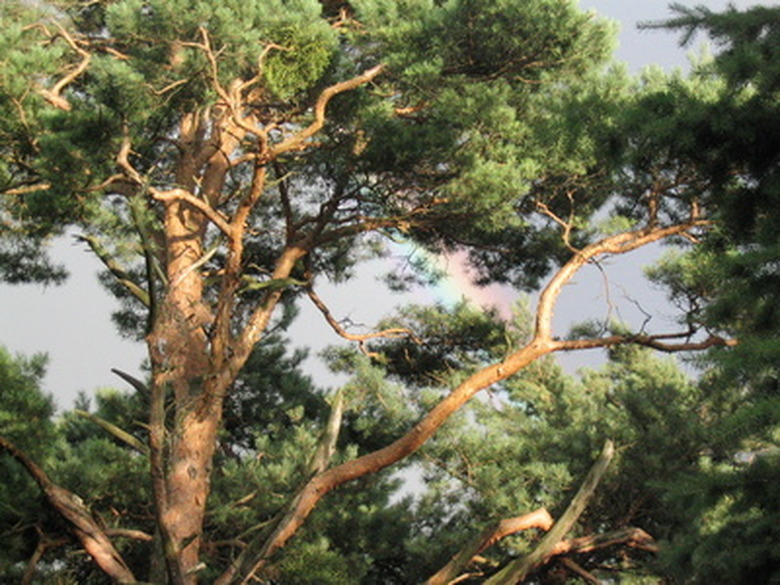The Best Pine Trees
Pine trees are part of the genus Pinus, a genus that contains 120 different species of trees that originate from the Northern Hemisphere. Grown in a wide range of shapes, sizes and growing requirements, the best pine trees are drought tolerant and tolerate a wide range of soil types.
Ponderosa Pine
Ponderosa pine (Pinus ponderosa) is a variety of pine tree that has a moderate growth rate and medium texture. It grows 60 to 100 feet tall and has a spread of 25 to 30 feet wide. The narrow to pyramidal shape of the young tree turns irregular as the Ponderosa pine tree matures. The curved, 5- to 10-inch-long, dark green to yellow needles grow in clusters of three along the stems. The light brown to red, 3- to 6-inch-long Ponderosa pine cones grow in clusters of three to five. The bark on Ponderosa pines is yellow brown to cinnamon red, creating an attractive contrast on the tree. The trees grow best in full sun and deep, well-drained, moist soil but tolerate a wide range of soil varieties. Ponderosa pine trees are also drought and salt tolerant. They grow best in USDA zones 3 to 7.
- Pine trees are part of the genus Pinus, a genus that contains 120 different species of trees that originate from the Northern Hemisphere.
- The trees grow best in full sun and deep, well-drained, moist soil but tolerate a wide range of soil varieties.
Scotch Pine
Scotch pine (Pinus sylvestris) is an evergreen pine tree that has a rapid growth rate. It grows 30 to 70 feet tall and 20 to 35 feet wide. Scotch pine trees have an irregular pyramidal shape when young that matures to an open, upright spreading form. The 1- to 3-inch long blue to green needles on Scotch pine trees grow in pairs and cast a yellow tinge in winter. The cones grow up to 3 inches long and appear in groups of two or three, or are solitary. Scotch pines trees are easy to transplant and tolerates drought, two ideal qualities in a pine tree. Their attractive form becomes more picturesque as the tree ages, making for an ideal landscape tree. Scotch pine trees grow best in full sun and well-drained soil. They are also versatile, and tolerate poor, dry planting sites. They are suitable in USDA zones 2 to 8a.
- Scotch pine (Pinus sylvestris) is an evergreen pine tree that has a rapid growth rate.
- Scotch pines trees are easy to transplant and tolerates drought, two ideal qualities in a pine tree.
Himalayan Pine
Himalayan pine (Pinus wallichiana) is an evergreen tree with a moderate to slow growth rate. It grows 30 to 50 feet tall and has a spread of 20 to 30 feet wide. Himalayan pine trees have an upright, pyramidal shape when young that matures to a wide, spreading form with cascading branches. The pendulous, 5- to 8-inch long blue to green needles on the Himalayan pine grows in bundles of five. The 6- to 12-inch wide green, cylindrical pine cones are oval in shape and turn brown as they mature. Himalayan pine trees are tolerant of air pollution and drought. They grow best in full sun to part shade and well-drained soil. Plant the Himalayan pine in USDA zones 5 to 7.
- Himalayan pine (Pinus wallichiana) is an evergreen tree with a moderate to slow growth rate.
- Himalayan pine trees have an upright, pyramidal shape when young that matures to a wide, spreading form with cascading branches.
